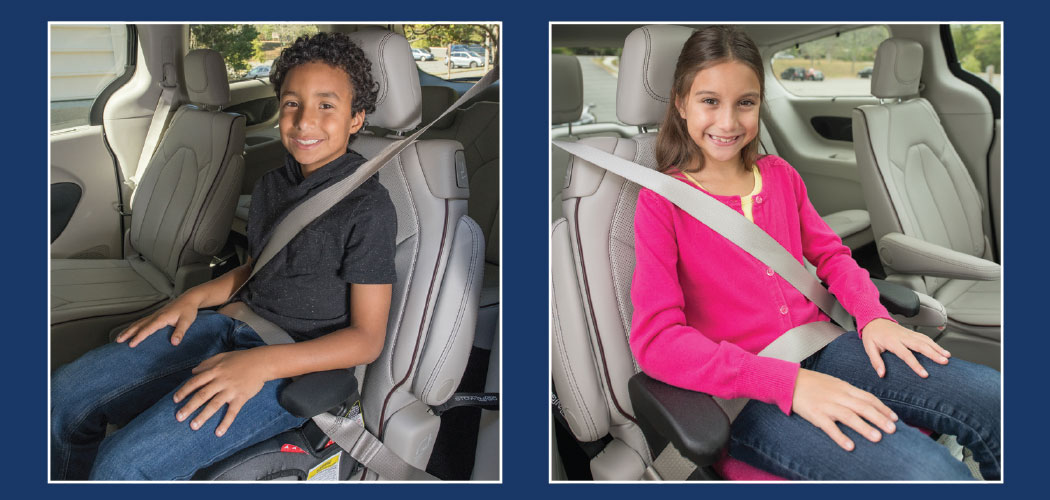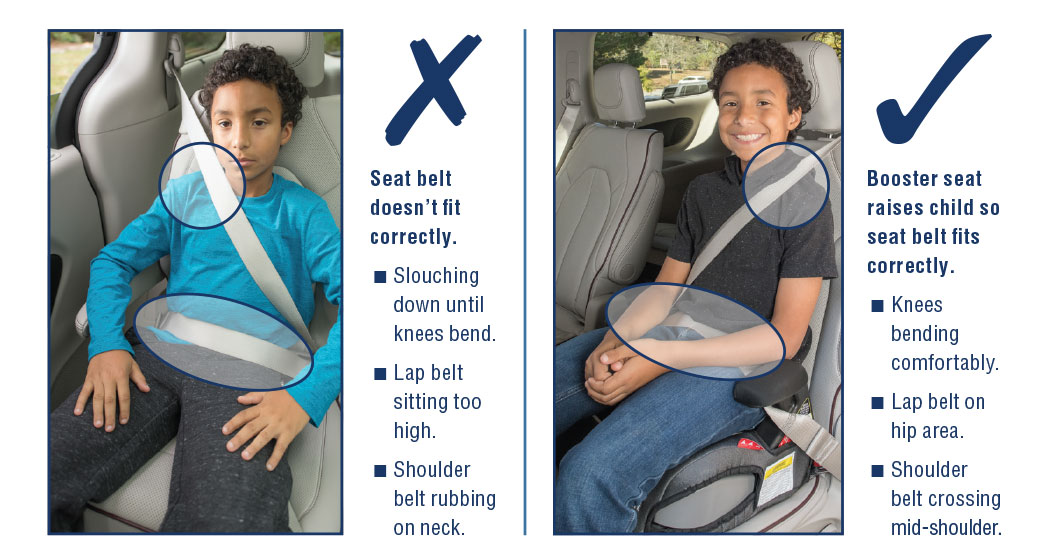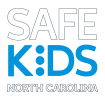Booster to Belt: Kids Need Boosters Longer Than You Think
Seat belts are designed for adults. Many older kids (age 8-12) are not yet tall enough for the seat belt to fit correctly.

How do booster seats work?
Booster seats give kids a “boost” so that the seat belt fits correctly. The seat belt does all the work, the booster seat just helps to put it in the right place. It is important to continue using a booster seat until the seat belt fits properly.
When are kids big enough to ride without a booster?
Kids come in all shapes and sizes so every child’s safety needs are a little bit different. Before allowing your child to ride without a booster seat, check to see if the seat belt fits. Kids should be able to pass all three seat belt fit criteria before riding without a booster seat.
Check the Seat Belt Fit
Remember, vehicle seats come in different shapes and sizes, just like children. Some kids may be ready to ride without a booster seat in one vehicle but still need one in another.

1. Sit back with knees bent naturally over the edge of the seat
Kids are big enough to ride without a booster seat when they can sit comfortably with their bottom against the back of the vehicle seat and their knees bent naturally over the edge. Kids whose knees do not bend at the edge of the vehicle seat will likely end up slouching down until their knees bend and they are more comfortable. When this happens, the seat belt will come off the hip bones and onto the stomach area, potentially causing injury in a crash. A child whose knees do not bend at the edge of the vehicle seat needs a booster seat.
2. Lap belt crosses the body on the bones of upper thigh/hips
Kids are big enough to ride without a booster seat when they can sit correctly (step 1) with the lap belt across their strong hip or thigh bones. Kids can be seriously injured in a crash if the lap belt sits across the stomach because it is not strong enough to handle the impact. If the lap belt crosses the stomach instead of the hip or thigh bones, the child needs a booster seat.
3. Shoulder belt crosses mid-shoulder
The shoulder belt helps keep the upper body in place during a crash. If the shoulder belt does not fit correctly, children may be tempted to pull it aside or put it behind them, leaving the upper body without protection. When that happens, the upper body can move too far forward during a crash, potentially causing injuries. If the shoulder belt does not cross at mid-shoulder, the child needs a booster seat.


